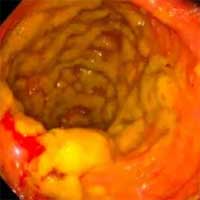Tag: CAUTI

Catheter-associated Urinary Tract Infection (CAUTI)
Urinalysis should not be checked simply due to cloudy or odorous urine (Class A recommendation from Infectious Diseases Society of America). This probably represents colonization of the Foley bag, not invasive infection. Be... read more

The Epidemiology of Symptomatic Catheter-associated Urinary Tract Infections in the ICU
Catheter-associated urinary tract infection (CAUTI) occurs frequently in critical illness with significant morbidity, mortality, and additional hospital costs. The epidemiology of symptomatic ward-acquired CAUTI (within 48... read more

Reducing Catheter-associated Urinary Tract Infections in the ICU
Patients in the ICU are at higher risk for catheter-associated urinary tract infection (CAUTI) due to more frequent use of catheters and lower threshold for obtaining urine cultures. This review provides a summary of CAUTI... read more

Reducing Hospital-Acquired Infections Among the Neurologically Critically Ill
Hospital-acquired infections (HAIs) result in excess morbidity, mortality, and resource consumption. Immobilized, ventilator-dependent ICU patients are at the highest risk of HAI. Despite broad implementation of relevant... read more

Diagnostic Stewardship for Healthcare-Associated Infections
Healthcare-associated infections (HAIs) are associated with increased morbidity and mortality, prolonged hospital stays, and unnecessary cost. The financial stakes of HAIs for hospitals were underscored in 2008 when the Centers... read more

Successful Strategy to Decrease Indwelling Catheter Utilization Rates in an Academic Medical ICU
Our interventions demonstrated that aggressive and comprehensive indwelling urinary catheters (IUCs) restriction protocol and provider training can lead to a successful decrease in IUC use, leading to a lower IUC utilization... read more

Review of Strategies to Reduce CLABSI and CAUTI in Adult ICUs
Central line–associated bloodstream infection (CLABSI) and catheter-associated urinary tract infection (CAUTI) are costly and morbid. Despite evidence-based guidelines, Some intensive care units (ICUs) continue to have... read more

New Clinical Resources From American Association Of Critical-Care Nurses Address Delirium, CAUTI And VTE
Updated AACN Practice Alerts offer latest evidence-based practice related to delirium, catheter-associated urinary tract infections and venous thromboembolism.... read more




